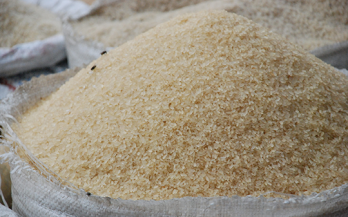The efficacy of a number of interventions that include fortified complementary foods (FCFs) or other products to improve infant and young child feeding (IYCF) is well established. This article reviews key findings from 11 coverage surveys of IYCF programs distributing or selling FCFs or micronutrient powders in 5 countries.
Large-scale food fortification (LSFF) of commonly consumed food vehicles is widely implemented in low- and middle-income countries. Many programs have monitoring information gaps and most countries fail to assess program coverage. The aim of this work was to present LSFF coverage survey findings from programs conducted in 8 countries between 2013 and 2015.
Food fortification is a cost-effective approach to prevent and control of micronutrient deficiencies in India. This study was conducted to assess the coverage of adequately iodized salt and the potential for rice fortification.
The need for evidence to inform nutrition program design and implementation has long been recognized, yet the generation and use of evidence for program decision making has lagged. The purpose of this study was to assess the strengths and areas for improvement of current population-based and targeted fortification programs.
The purpose of this study aimed to assess existing coverage and utilization of micronutrient powders (MNPs), fortified staples, and iodized salt among children aged 6 to 23 months prior to implementation of an MNP program.
Several types of interventions can be used to improve nutrient intake adequacy in infant and young child diets, including fortified foods, home fortification, nutrition education and behaviour change communication in addition to agricultural and market‐based strategies. The purpose of this study was to initiate a collaborative project in Kenya to improve the nutritional adequacy of foods consumed by infants and young children.
This paper summarizes the discussions and priority research areas for the forthcoming years on the industrial and regulatory technical considerations in rice fortification. It also covers considerations for implementing it as a public health strategy and assuring equitable access and universal coverage, were reviewed in this consultation.
Two billion people worldwide have micronutrient deficiencies. Food fortification is a proven intervention to increase essential micronutrient availability in diets without requiring consumer behavioral change. This study examines a pilot project in Brazil testing a model to scale up rice fortification through commercial channels.
The study’s objective was to assess dietary intakes of key micronutrients and the consumption pattern of potentially fortifiable foods, and then to model the potential impact of fortification of key staple foods.
This supplement presents results from Fortification Assessment Coverage Toolkit (FACT) surveys that assessed the coverage of population-based and targeted food fortification programs across 14 countries. It then discusses the policy and program implications of the findings for the potential for impact and program improvement.










